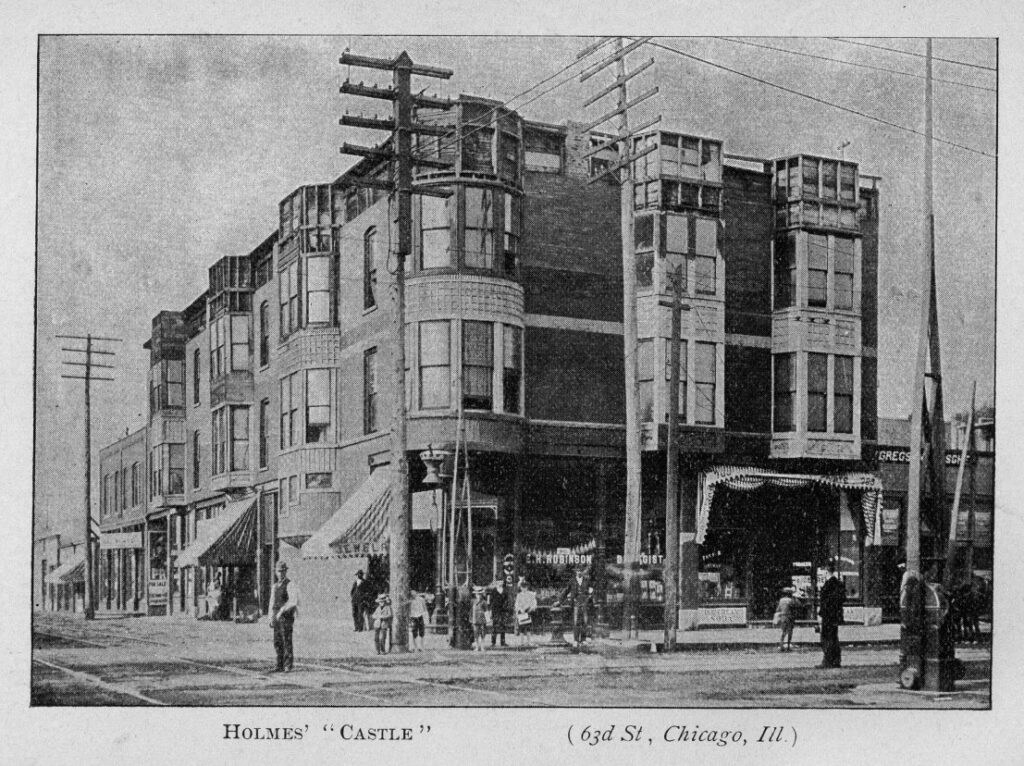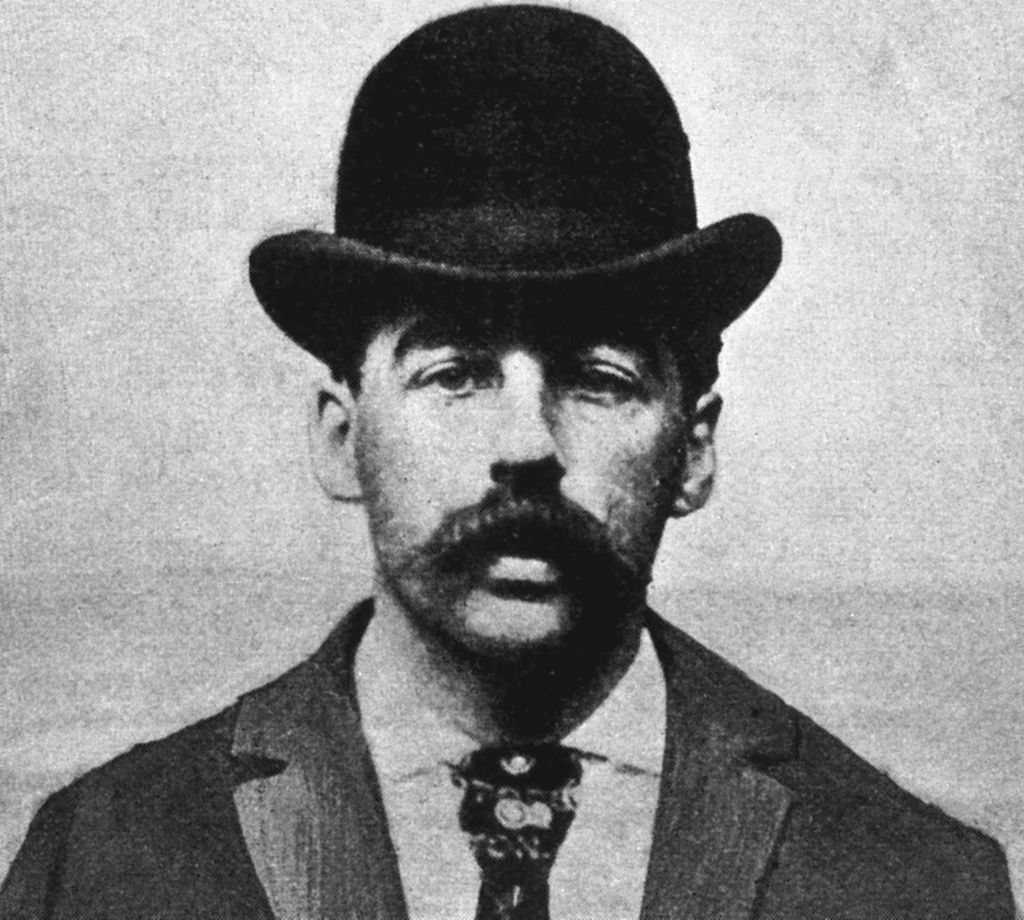
Meet H.H. Holmes, The White City’s “Devil”
Published on May 12, 2023
Last week, we explored how the 1893 World’s Columbian Exposition was Chicago’s coming-out party as a major city. This week, we’re focusing on the darker side of the fair, the story of H.H. Holmes. The fairgrounds were in Jackson Park, where eATLAS has a free, self-guided tour of the park so you can discover what had been there and what still remains.
By Dave Lifton (@daveeatschicago)
More than 125 years after he was hanged, the name H.H. Holmes still looms large in the annals of American crime as one of this country’s first serial killers. But the full extent of the exploits in his “Murder Castle” will likely never be known.
What is certain is that he was born Herman Webster Mudgett in Gilmanton, N.H., in 1861. By the age of 17, he had married Clara Lovering and was enrolled at the University of Vermont. But he soon transferred to the University of Michigan’s medical school, where he began robbing graves, both for dissection and insurance scams. Upon his 1884 graduation, Mudgett abandoned his wife and their young son and eventually moved to Chicago, where he began introducing himself as Henry Howard Holmes.
Although still legally married to Clara, he took another bride, Myrta Belknap of Wilmette, Ill., and found a job at Dr. Elizabeth S. Holton’s pharmacy on the corner of W. 63rd St. and S. Wallace Ave. in Chicago’s Englewood neighborhood. Within a few years, he had purchased the pharmacy as well as an empty lot across the street. Here, Holmes would go on to build his infamous “Murder Castle.”
A 1943 Harper’s article details Holmes’ scams, both to build and furnish the three-story, 150′ x 50′ structure without paying and the phony patent medicines he was selling in its ground floor drugstore. But the piece notes that the interior was where it earned its reputation thanks to its dead-ended hallways and staircases, trap doors, chutes, vaults, secret rooms without doors, and a gas chamber. The cellar was downright ghoulish; a makeshift operating room also reportedly contained a crematorium and pits with quicklime and acids.

It’s believed that Holmes’ first victims were Julia Conner, a married woman with whom he was having an affair, and her daughter Pearl. They had last been seen around Christmas 1891.
In March 1893, Minnie Williams, a woman from Texas he’d met on his travels, moved to Chicago to be with him. Minnie’s younger sister, Nannie, joined them in July. But upon her arrival, Holmes suffocated Nannie in an airtight vault in his home before Minnie had the chance to see her.
But the legend of the handsome, charming Holmes preying on single women at the fair and murdering them at his home has largely been discredited, primarily by writer Adam Selzer, as a combination of yellow journalism and myth-making.
As the fair ended, the creditors Holmes had avoided for years were closing in. He and Minnie fled Chicago and resurfaced in Denver, where, in early 1894, he’d married another woman, Georgiana Yoke, although he had never divorced either Clara or Myrta (it’s unclear if he had ever married Minnie). Within a few months, he killed Minnie for the deed to her Fort Worth property.
Holmes continued running scams while on the lam, one of which landed him in a St. Louis jail in the summer of 1894. Upon his release, he embarked on another bit of insurance fraud, this one involving faking the death of his partner-in-crime, Benjamin Pitezel. Instead, Holmes wound up killing Pitezel and, subsequently, three of Pitezel’s children.
Private detectives investigating his swindles tracked Holmes down in Boston, and he was arrested on Nov. 17th, 1894. Within a year, the bodies of the Pitezel children, and the contents of the Murder Castle, had been discovered. But he was only tried for Benjamin’s murder. Holmes was found guilty, and hanged at Philadelphia’s Moyamensing Prison on May 7th, 1896, nine days shy of his 35th birthday. The Murder Castle was demolished in the 1930s and replaced by a post office.

While incarcerated, Holmes confessed to killing 27 people, but several of those were still alive at the time of his capture, and only nine deaths—the Conners, Pitezels, Willams’, and another mistress named Emeline Cigrand—have been all-but confirmed to have been committed by him. However, in the ensuing years, virtually any death of unnatural causes where a tenuous connection to Holmes can be made, or the disappearance of any single woman at the fair, has been attributed to him. This is why it’s often been said that he may have murdered as many as 200 people.
Even if the death toll was less than reported, H.H. Holmes’ crime spree was nonetheless unheard of in late-19th century America. His story, albeit the sensationalized version, was re-introduced to a new generation in Erik Larson’s 2003 best-seller, The Devil in the White City.

The Adventure starts when you say it does.
All eATLAS Adventures are designed and built by experienced eATLAS Whoa!Guides. They're always on. Always entertaining. And always ready to go.
Check out our Adventures!